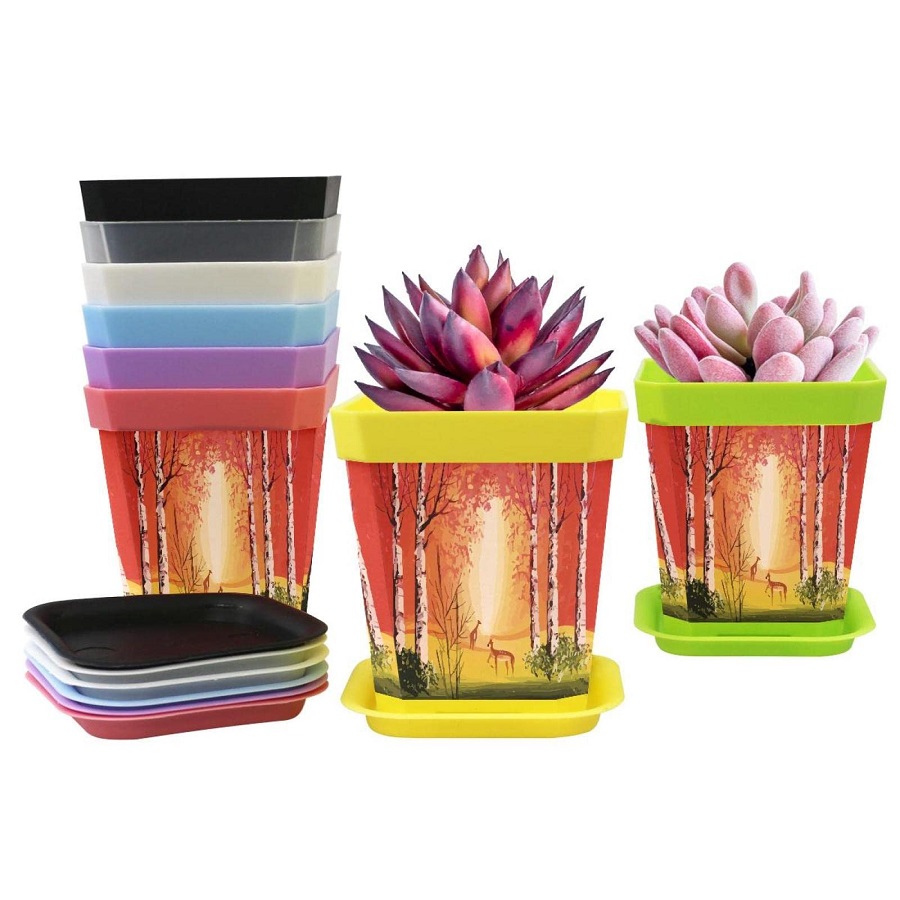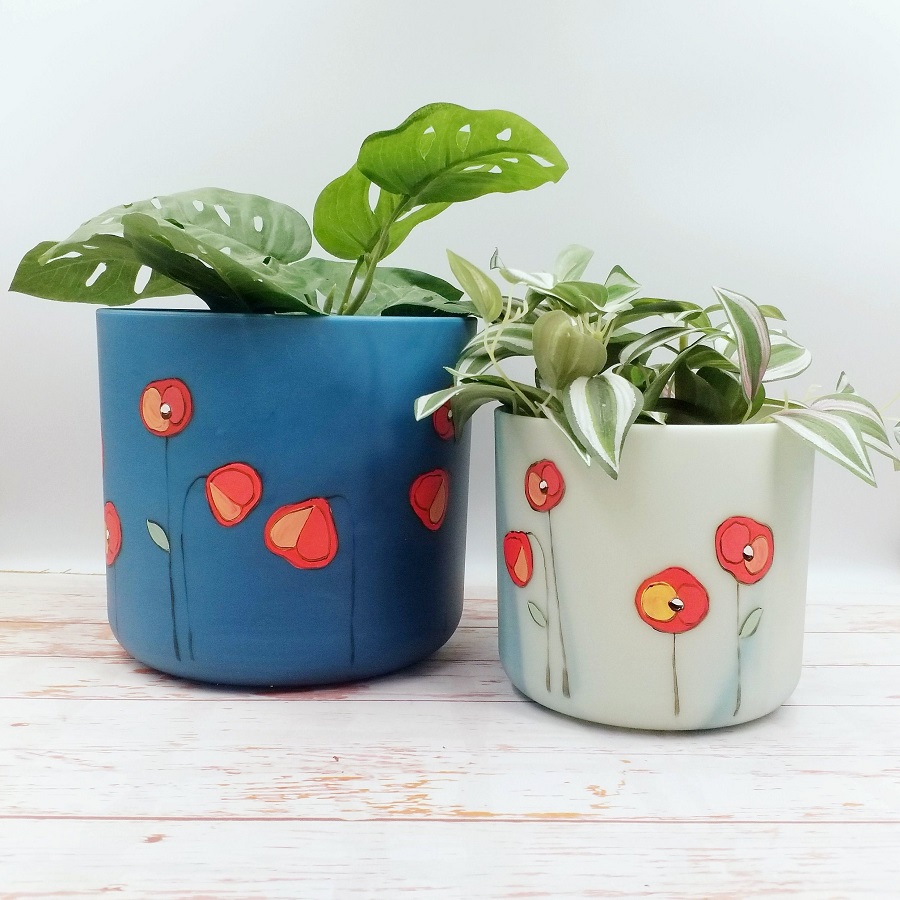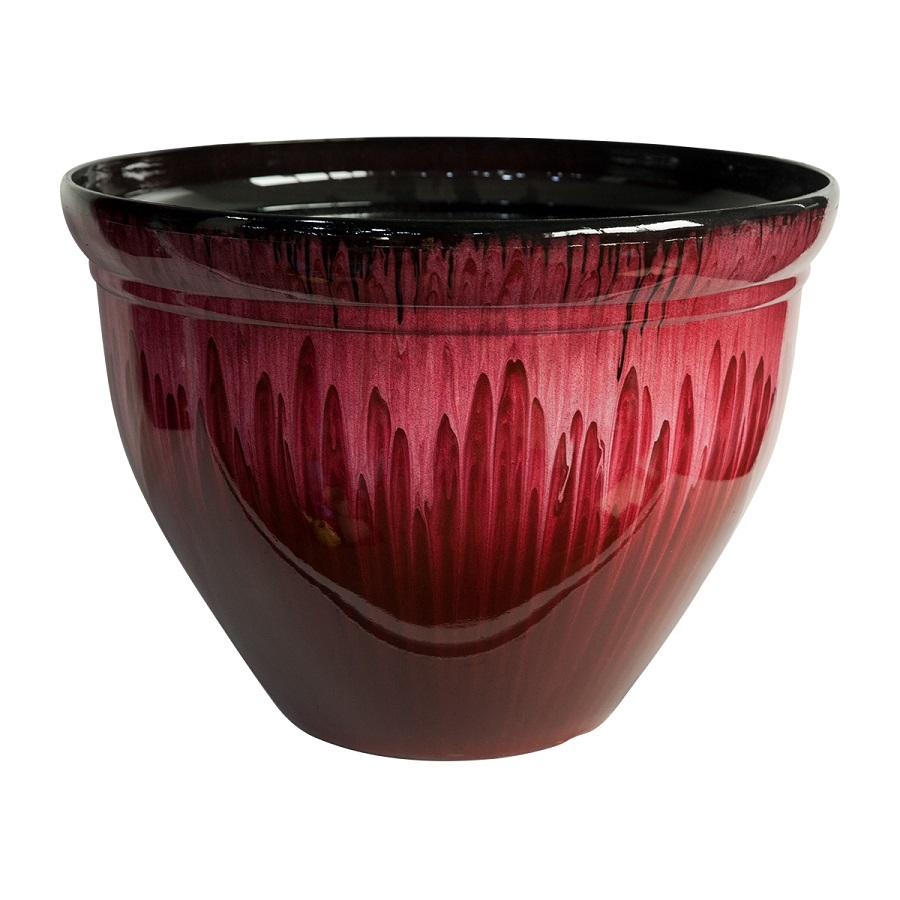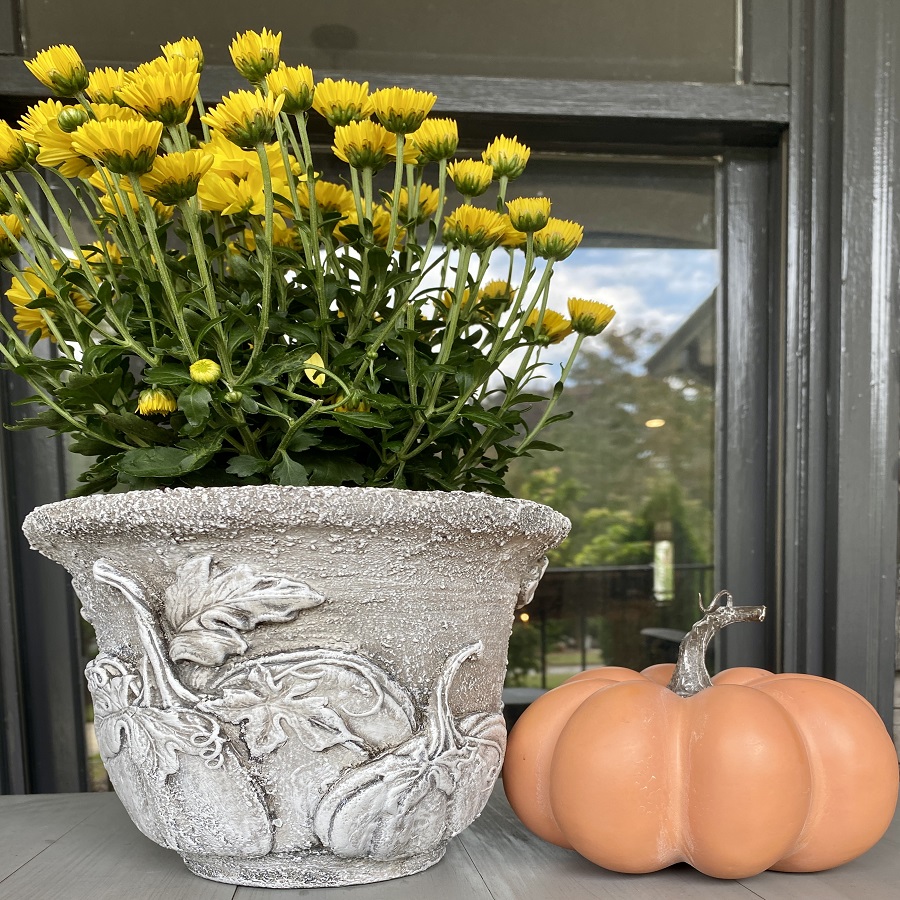The Benefits of Painting Plastic Pots to Mimic Cement
Transforming plastic flower pots into faux cement planters offers several advantages. Firstly, it reduces the need for new cement pots. This is better for the environment. Cement pots are heavy. Painted plastic ones are not. Moving them around is easier. Plus, they are less likely to crack or chip. This extends their life.
Painting allows for custom style. You can match the look of your outdoor space. It’s also a creative way to upcycle. Old plastic pots get a fresh, modern look. Lastly, it’s cost-effective. You avoid the expense of actual cement planters. It’s a smart choice for gardeners on a budget.

Preparing Your Plastic Pots for Painting
Before you start painting plastic flower pots, good preparation is key. Follow these steps to ensure the best results:
- Clean the pots thoroughly. Remove any dirt, grime or residue. This helps paint stick better.
- Sand the surface if it’s glossy. Use a fine-grit sandpaper. This creates a texture for the paint to grip.
- Wipe down the pots after sanding. Use a damp cloth to remove dust.
- Apply a primer. Choose one suitable for plastic surfaces. It gives an even base for the paint.
- Let the pots dry completely. Before painting, they must be fully dry. Patience at this stage pays off later.
By correctly preparing your plastic pots, the painting process will be smoother. The finish will also be more durable and professional-looking.
Selecting the Right Paint for a Concrete Effect
Choosing the right paint is crucial for achieving a concrete look on plastic pots. Here’s what you need to consider:
- Opt for Textured Spray Paint: The texture in the paint can mimic the rough surface of concrete. Look for a paint labeled as fine textured or with a stone finish.
- Consider Environmentally Friendly Options: While traditional spray paints achieve the desired effect, they can be harmful to the environment. Explore eco-friendly paint options available in the market.
- Get the Right Color: Concrete-effect paint typically comes in various shades like light gray (granite), limestone, pebble, and charcoal. Choose a color that suits your design vision.
- Durability Matters: Make sure the paint is suitable for outdoor use if your pots will be exposed to the elements. It should withstand sun and rain.
- Safety for Plants: Check if the paint is non-toxic and safe for plants, especially if painting the interior of the pot.
By selecting the appropriate paint, you’ll not only achieve an authentic concrete effect but also ensure the longevity and safety of your decorated plastic pots.

Step-by-Step Guide to Painting Plastic Pots
To transform plastic flower pots into stylish, cement-mimicking pieces, follow this simple guide:
- Begin with safety first. Work in a well-ventilated area or outdoors. Wear gloves and a mask.
- Start with a clean pot. Wash it with soapy water to remove dirt and oils. Rinse and let dry.
- If shiny, sand the surface. Use fine-grit sandpaper to create a texture for the paint to adhere to.
- Dust off the pot. After sanding, wipe it down with a damp cloth to remove sanding dust.
- Apply a quality primer. Choose one specifically for plastic. This will help the paint stick better.
- Choose the right paint. Textured spray paint works best for a concrete look. Select a suitable color.
- Spray evenly. Hold the can about 8-10 inches away from the pot. Apply in steady strokes.
- Allow the first coat to dry. Wait for the time recommended on the spray paint can before applying a second coat.
- Add additional layers if necessary. Multiple thin coats are better than one thick layer for an even finish.
- Let the pot dry completely. Ensure the paint is fully set before using the pot for planting.
By following these steps, you’ll achieve a professional-looking finish that resembles the texture and color of real cement. Remember to protect your work area and always handle paint and chemicals with care for the best results and safety.
Adding Aging Effects to Plastic Pots for an Authentic Look
To create an aged look on plastic pots, you can use a few simple techniques.
- Layer with Green Paint: Apply a light layer of green spray paint at the pot’s base. It imitates moss growth.
- Dab on White Paint: Add touches of white paint to mimic the appearance of lime or weathering.
- Use Multiple Coats: Layering several coats of paint adds texture and depth, enhancing the aged effect.
- Create Speckles and Smudges: Flick a stiff brush dipped in paint to create speckles. Use a sponge for smudges.
- **Let It Dry Naturall*y: Allow each layer to dry before applying the next. Natural drying contributes to the texture.
- Finish with a Sealant: A light sealant coat can protect the aged look and the pot from weather.
With these steps, you can give your plastic flower pots a convincingly aged cement appearance. The result is a crafted piece that looks like it’s been part of your garden for years.
Creative Ideas for Aging and Texturing Techniques
Achieving an authentic aged look on plastic pots requires creativity. Here are some techniques:
- Sponge Texture: Dab a sponge dipped in paint to add varied texture.
- Sand Texture: Mix a bit of sand into the paint before application. This adds roughness.
- Dry Brush Technique: With a dry brush and light hand, stroke the surface. It gives a sun-faded effect.
- Stippling: Use a stippling brush for an uneven, dappled appearance.
- Layer Different Colors: Apply multiple layers of different shades. Start with darker colors and end with lighter. This mimics natural weathering.
- Crackling Effect: Use a crackle medium between two paint layers. It creates a crackled look of old cement.
- Moss Effect: Use a mix of green and brown paint. Apply it sparsely to suggest moss.
- Salt Technique: Sprinkle salt on the pot’s wet paint. Once dry, brush it off. This leaves a pitted texture.
Remember, combine these techniques or use them alone. Experiment to find what works for you.

Protecting Your Faux-Cement Planters
Once you’ve transformed your plastic pots with a cement-like appearance, protecting them is key. Here’s how to keep them looking great:
- Use a Clear Sealant: Apply a clear spray sealant designed for outdoor use. This shields your pots from the elements.
- Apply with Care: Spray the sealant in thin, even coats. Make sure to cover all painted surfaces.
- Protect from Excessive Wear: Place your planters in spots where they won’t be knocked over or scratched.
- Reapply as Needed: Over time, the sealant may wear off. Check your pots yearly and reseal them if the finish looks dull.
- Avoid Harsh Chemicals: When cleaning your planters, don’t use strong cleaners. They can damage the paint and sealant.
Following these steps ensures your faux-cement plastic pots stay durable and attractive season after season.
Incorporating Painted Plastic Pots into Garden Design
Once you have successfully painted your plastic flower pots to look like cement, it’s time to incorporate them into your garden design. Here’s how to make these faux-cement planters a cohesive part of your outdoor space:
- Arrange in Groups: Position your painted pots together to create focal points. Grouping them adds visual interest.
- Mix Sizes and Shapes: Use different-sized pots for a dynamic look. Varying shapes give depth to your garden layout.
- Consider Plant Selection: Choose plants that complement the cement look. Succulents, grasses, and green foliage work well.
- Elevate Pot Positioning: Place some pots on stands or pedestals. This adds levels to your garden view.
- Balance with Natural Elements: Mix your faux-cement pots with natural materials. Wood, stone, and metal accents keep the space organic.
- Add Garden Accessories: Decorative stones, garden statues, or outdoor art enhance the potted garden scene.
- Create Pathways: Set painted pots along pathways. They guide visitors through your garden and highlight areas of interest.
- Theme Consistency: Keep the cement aesthetic consistent. Use a similar painting style for all pots for uniformity.
By using these tips, painting plastic flower pots can contribute to an elegant, contemporary garden design that is practical and pleasing to the eye. Remember, the goal is to blend creativity with functionality, creating a garden that is both attractive and easy to maintain.
